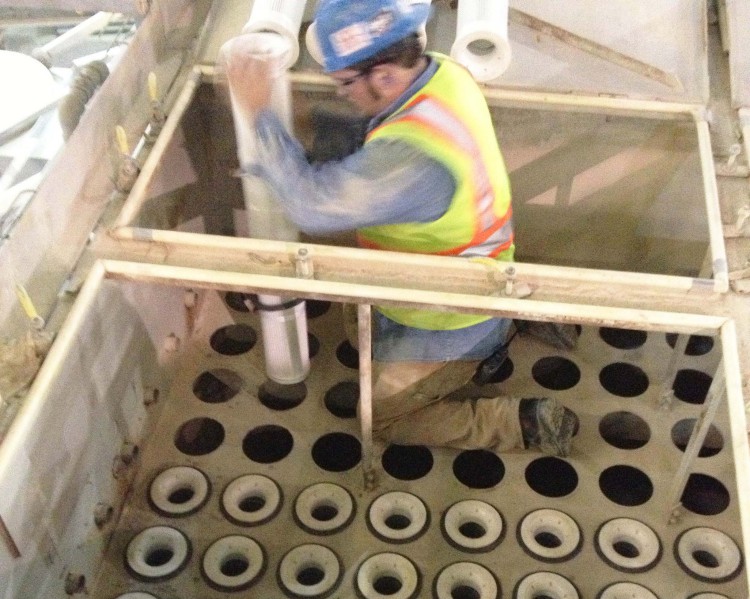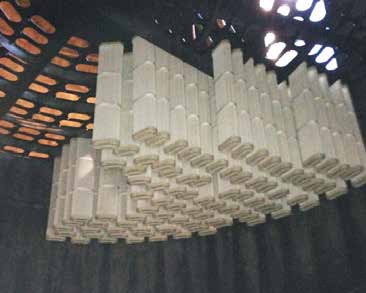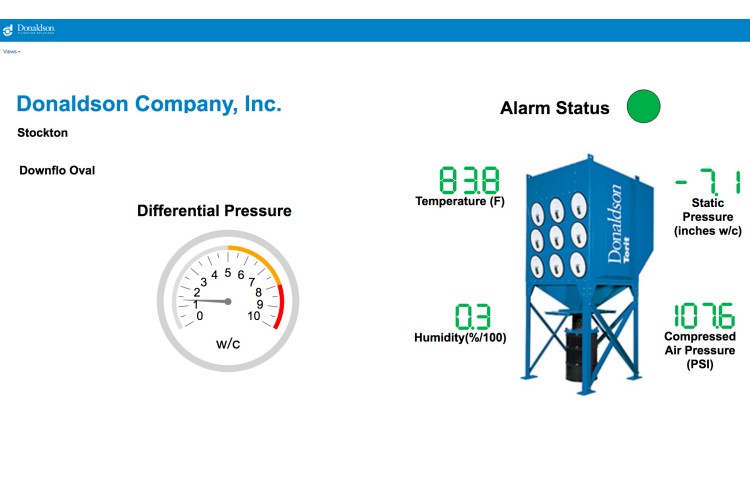How to Minimize Downtime in Your Mill Dust Collector
Dust control is an integral part of milling. Managing dust is necessary throughout the process: in pneumatic conveying and central vacuum systems; near bag dumps and packaging; near grinding, milling, dryers, and blending steps; and at truck or rail car loading points.
Baghouse dust collectors—the model most commonly used in milling—are rugged machines and rarely break down. But if a disruption should occur, it can be costly because of lost production and repair expenses. It is far more cost-effective to take steps to optimize baghouse performance and monitor equipment than to risk a disruption.
Two Ways to Improve Dust Collector Uptime
Two advancements in filtration from Donaldson make equipment even more reliable and easier to maintain. One is new pleated filter construction, and the other is smart technology that monitors the dust collector’s condition. Both of these improvements can be easily installed on any new or existing dust collector. Here is more about each option:Figure 1: Pleated bags help reduce downtime costs

1. Donaldson Pleated Bags: Longer Life, Better Efficiency, and Easier Replacement
Most baghouse dust collectors use polyester felt bags to capture dust drawn into the system. In many baghouses, compressed air periodically dislodges the dust build-up on the filter to maintain optimal filter performance. The flexibility of these bags is ideal for shedding agglomerative (sticky) material. However, the media can wear quickly with exposure to abrasive dusts. Also, changing them can be time-consuming since each support cage much be removed and fitted with a replacement bag.
With these challenges in mind, Donaldson has developed a hybrid technology: the pleated filter bag. Pleated bags have the flexibility of conventional filters, but are more durable, efficient, and easier to replace—like filters previously available only for cartridge-style dust collectors. (Figure 1)
Here are the advantages of Donaldson pleated filter bags in greater detail:
Stronger material: Our pleated filters come in spunbond polyester, ePTFE membrane, or fine fiber options. All of these media are more resistant to damage than common polyester felt. Capture efficiency: The improved media capture submicron dust particles more effectively and the dust loads on their surfaces, which lowers emissions and extends filter life. Compact size: Because pleated bags have double the filtration surface area, they can be half the length of traditional bag filters, which simplifies filter replacement time. As a direct replacement for traditional felt bags, pleated bag filters can deliver up to three times the filter life of a 16-ounce polyester felt bag, reduce energy use and emissions, and reduce labor and downtime costs by up to 50 percent.

Figure 2: Typical pleater filter bag installation in a baghouse
Reduced abrasion: The shorter length of pleated bag filters encourages heavier, more-abrasive material to fall out of the airstream naturally, reducing wear and extending filter life. (Figure 2)
One-piece construction: Donaldson pleated filters provide their own support, which speeds up replacement and releases less dust than removing both a support cage and felt bag. Lower energy requirement: Depending on collector design, pleated media allows a greater volume of air (in cubic feet per minute or CFM) to move through the collector, creating lower resistance to airflow which saves energy.
2. Donaldson Connected Technology: Real-Time Monitoring and Timely Maintenance
Another way to improve dust collector uptime is to conduct timely maintenance. Hidden problems such as worn valves, or filters too dust-loaded to clean, can cause equipment failures. Yet today, mill owners don’t always have the time/resources to monitor this equipment.

Figure 3: Connected Solutions dashboard
Donaldson has introduced a connected solution for this problem. The technology monitors dust equipment remotely and alerts owners before maintenance actions are required. Sensors placed on the dust collector send real-time data to the cloud, where Donaldson analytics convert it into useful intelligence. The person responsible for maintenance receives insights via a web-based dashboard and text or email alerts. With a laptop or mobile device, a supervisor can keep tabs on many dust collectors across multiple locations. (Figure 3)
The technology can be installed on new or existing equipment made by any manufacturer. In pilots with facilities including mills, the connected solution provided these typical results:
One facility that struggled with a plugged dust collector hopper twice a month, on average, required two to three hours per incident to fix it. Earlier alerts from the connected technology reduced allowed them to address the problem before particulate built up in the dust collector and the factory, reducing corrective action time to 15 minutes. Another facility seeing short filter life could not identify the cause. Data from the connected solution enabled Donaldson’s support team to quickly diagnose that low compressed air pressure led to improper filter cleaning and eventually filter plugging. Once the problem was identified, it was easy to make necessary changes—and get the facility back to normal filter life.
Donaldson’s connected solution can increase production uptime and optimize filter life and equipment function. The results are lower total costs for dust control systems and more time to focus on higher-value production tasks.
More Uptime = Lower Costs
Today, mills have advanced and convenient options for improving dust collector uptime and reducing total spend on maintenance. By installing pleated filter bags and a connected solution to monitor equipment, owners have an effective and affordable combination of strategies to manage dust control.Certifications
Let Dust Collector Services helps with all your OSHA and NFPA requirements.

